Moniek Bloks's Blog, page 103
September 17, 2022
Review: The Serpent Queen (2022) – Episode 1
Meet Catherine de’ Medici, Queen of France.
Terrified servants debate who gets to serve the Queen today, and the chosen one is Rahima. The lowly Rahima makes her way through the corridor through the taunts of guards, who seem equally terrified of the Queen. Well, Catherine, dressed in ominous black, is not quite as terrifying as others made her out to be.
Catherine can relate to the servant girl – having been raised in a convent after being orphaned. Catherine tells the story of her rise to Rahima. From the deaths of her parents to being raised by nuns and then being plucked from obscurity to marry the second son of the King of France. It’s all told in a rather humourous fashion, with Catherine herself addressing the camera. We get a little The Princess Diaries moment as Catherine is transformed into a future Princess, though slightly on the ridiculous side as Catherine can barely walk.
But Catherine and Henry hit it off, and after some more intense negotiating, the wedding goes ahead as planned. Catherine meets Diane de Poitiers, who also happens to be a cousin of hers, who tells her to be bold on the wedding night. What happens next is some kind of circus as half the court gathers around the marital bed. After some hesitation, Catherine decides to climb on top of Henry to get the deed done. Unfortunately, this leads to a snipe from his father and quite possibly ruins Catherine and Henry’s precarious relationship.
An angry Catherine later storms to Henry’s room – only to find him in the arms of Diane de Poitiers. The scene is set.
And beautifully set it is. From the costumes – not quite historical but magnificent and over the top – to the castles – the real ones Catherine would have known – to the music – angsty but with a beat. But let’s not pretend that we’re making a documentary here. The first episode is fun with a touch of history. I can’t wait to see more.
The Serpent Queen is available now on STARZ.
(If you want to read more about the real Catherine de’ Medici, I would highly recommend Catherine de Medici: Renaissance Queen of France by Leonie Frieda – Available here (US) and here (UK)).
The post Review: The Serpent Queen (2022) – Episode 1 appeared first on History of Royal Women.
The accident that changed Monaco forever (Part three)
I would like to be remembered as someone who accomplished useful deeds, and who was a kind and loving person.1
On 18 September 1982, Monaco laid its Princess to rest.
The coffin was carried to the Notre-Dame-Immaculée Cathedral, Saint Nicholas, as bells sounded. Her husband, Prince Rainier, with their children, Prince Albert and Princess Caroline, followed the casket. Unfortunately, princess Stéphanie was still hospitalised and could not attend. The procession was led by a priest holding a mahogany cross tipped in gold. The coffin was covered with a white banner with the arms of the Grimaldi family. According to Prince Rainier’s wish, Grace was to be interred in the choir of the cathedral. The steps to the cathedral were covered in flowers.
Embed from Getty ImagesThe service was led by Charles Amarin Brand, who was the Archbishop of Monaco. He spoke of being “united in pain” and described the events as “the rupture of the destiny of this humanly exceptional, religiously exceptional person.”Her faith “modeled, indeed sculpted, not only the public person, but the deep personality of her being.” 2 The mass included selections from Bach and Barber. The gospel reading was from John.
Embed from Getty ImagesThe mourners included Grace’s two sisters and her brother. Foreign representatives and reigning and non-reigning royalty included the President of Ireland, Queen Anne-Marie of Greece, Prince Bertil of Sweden, Princess Benedikte of Denmark, Grand Duchess Joséphine-Charlotte of Luxembourg, Prince Philip of Liechtenstein, Grand Duke Vladimir of Russia, the Duke of Aosta, the King and Queen of the Belgians, the Prince and Princess of Liège, Prince Bernhard of the Netherlands, and The Princess of Wales. Her former co-star Cary Grant also attended, as did several representatives of the United States government.
Embed from Getty ImagesIn the city of her birth, Philadelphia, a memorial mass was held. Cardinal Krol spoke of Grace, “Grace Kelly will be remembered as a famous Philadelphian, as a talented actress, and as the Princess of Monaco. But there is an important dimension to her life that merits recognition and remembrance, and that is her role as wife and mother.”3
The post The accident that changed Monaco forever (Part three) appeared first on History of Royal Women.
September 16, 2022
The Year of Empress Elisabeth – The funeral of Sisi
On 15 September 1898, the body of Empress Elisabeth arrived at the Hofburg in Vienna. Elisabeth’s wish to be buried “at the ocean, preferably on Corfu” would not be honoured. Elisabeth’s body was placed in the chapel of the Hofburg in a closed casket. By the account of Count Erich Kielmannsegg, “not many tears were shed for her.”1
Embed from Getty ImagesThe day of the funeral – 17 September 1898 – was cool and sunny. Mourning flags were all over Vienna, and along the route of the funeral procession, crowds had already gathered. Monarchs from other European countries and their representatives, 80 archbishops, bishops, ministers, officials, and knights of the Order of the Golden Fleece, accompanied the funeral procession. Elisabeth’s coffin was covered with black velvet, and bells rang out as it made its way to its final destination. Except for the bells, the streets were completely quiet. The streets had been covered with sand so that the clattering of the horses’ hooves and the wheels of the carriages were silent.2
Embed from Getty ImagesEmperor Franz Joseph accompanied his wife’s coffin, together with their two surviving daughters: Gisela and Marie Valerie. He reportedly broke down in tears as he said his final farewell to his wife down in the Imperial Crypt.3 Also with them was Emperor Wilhelm II of Germany, crammed into the small church with the rest of the mourners.
Embed from Getty ImagesMarie Valerie wrote in her diary, “I wished that she had now found what she had so bitterly doubted – the loving mercy of God.”4 The Empress Frederick wrote to her mother, Queen Victoria, “One’s only hope is that she did not suffer too much. She was so melancholy, so unhappy, so sick and tired of life and took such a sad view of existence that I am sure the fact of being at rest is a blessed one for her… She was so kind and so simple and a straightforward, trustworthy character, courageous and independent. I was truly fond of her…”5
 Photo by Moniek Bloks (Elisabeth is on the left)
Photo by Moniek Bloks (Elisabeth is on the left)Elisabeth now rests next to her husband, Emperor Franz Joseph and their son Crown Prince Rudolf. Their eldest daughter Sophie is also interred here in a different part of the crypt.
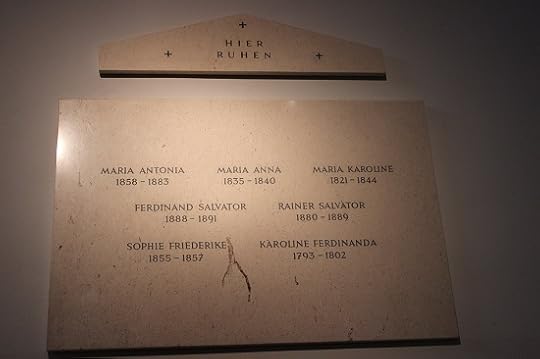 Photo by Moniek Bloks
Photo by Moniek BloksTheir daughters Gisela and Marie Valerie are buried in the St. Michael’s Church in Munich and the parish church in Sindelburg, respectively.
The post The Year of Empress Elisabeth – The funeral of Sisi appeared first on History of Royal Women.
The Year of Empress Elisabeth – The Imperial Austrian Order of Elisabeth
On 17 September 1898, just six days after the assassination of Empress Elisabeth of Austria, her husband created the Imperial Austrian Order of Elisabeth in her honour. It also paid tribute to Saint Elisabeth of Hungary.
It was divided into three classes: Grand Cross, First and Second Class. In addition, there was an Elisabeth medal for civil merit. The medal consisted of a gold cross with arms stylised with lily blossoms. The blossoms were in three parts, with the two outer leaves in enamelled red and the middle one in enamelled white. Between the arms were green enamelled leaves and red flowers. The centre part showed an image of Saint Elisabeth, and on the back, it had a golden with the initial E for Elisabeth on the back.
 Frieda Countess Logothetti wearing the order (By Karel Žádník (Moravian 1847-1929) – photograph by the Slovácké MuzeumPicture (2011) of the original paintingblack and white photograph by Willem B. Engelbrecht, c1930., CC BY-SA 3.0 via Wikimedia Commons)
Frieda Countess Logothetti wearing the order (By Karel Žádník (Moravian 1847-1929) – photograph by the Slovácké MuzeumPicture (2011) of the original paintingblack and white photograph by Willem B. Engelbrecht, c1930., CC BY-SA 3.0 via Wikimedia Commons)The order was meant for women, regardless of their social status and religion, for merits in religious and charitable work. There were a total of 81 awards of the Grand Cross, 332 awards of the First Class, 500 awards of the Second Class and 208 awards of the medal.1
The order had to be returned upon the receipt’s death. The Order was abolished in 1918 with the end of the Empire.
The post The Year of Empress Elisabeth – The Imperial Austrian Order of Elisabeth appeared first on History of Royal Women.
Book News October 2022
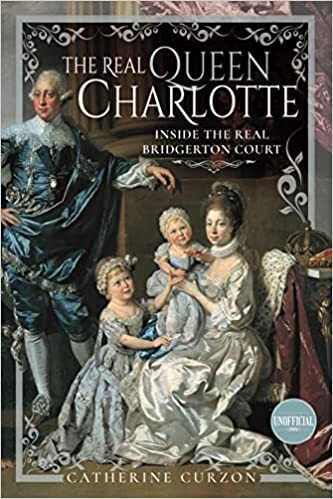
The Real Queen Charlotte: Inside the Real Bridgerton Court
Hardcover – 31 August 2022 (UK) & 30 October 2022 (US)
Known to millions as the imperious matriarch of Bridgerton’s court, Charlotte of Mecklenburg-Strelitz was still a teenager when she was chosen to be the bride of King George III. Shy, innocent, and sheltered, the orphaned princess and her youthful groom carried the hopes of a nation on their shoulders. The placid and unassuming young couple symbolised a new beginning, but soon those hopes began to sour. Charlotte and George’s marriage lasted for nearly 60 years and produced more than a dozen children, but it was beset by unrest at home, war in the colonies, and the king’s encroaching madness. As the royal couple battled against their critics, their political opponents, and sometimes even their own family, Charlotte learned what it really meant to be Queen. Locked in a bitter struggle with her eldest son for the king’s future and with her daughters for their freedom, the timid young girl grew into an insular and domineering woman that few dared to cross. Shouldering the burden of family disputes, ambitious courtiers, and the care of the man she adored, Charlotte of Mecklenburg-Strelitz presided over one of the most tumultuous eras that the monarchy has ever seen. As tragic as it was glittering, this is the story of her extraordinary life.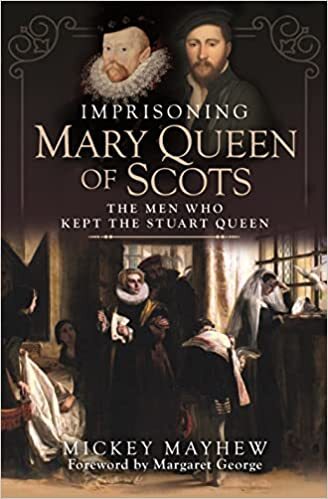
Imprisoning Mary Queen of Scots: The Men Who Kept the Stuart Queen
Hardcover – 30 August 2022 (UK) & 30 October 2022 (US)
Imprisoning Mary Queen of Scots covers the lives and careers of the men and women who ‘kept’ Mary Queen of Scots when she was a political prisoner in England, circa 1568/9-1587. Mary’s troubled claim to the English throne – much to the consternation of her ‘dear cousin’ Elizabeth I – made her a mortal enemy of the aforementioned Virgin Queen and set them on a collision course from which only one would walk away. Mary’s calamitous personal life, encompassing assassinations, kidnaps and abdications, sent her careering into England and right into the lap of Henry VIII’s shrewd but insecure daughter. Having no choice but keep Mary under lock and key, Elizabeth trusted this onerous task to some of the most capable – not to mention the richest – men and women in England; Sir Francis Knollys, Rafe Sadler (of Wolf Hall fame), the Earl of Shrewsbury and his wife, Bess of Hardwick, and finally, the puritanical nit-picker Sir Amyas Paulet. Until now, these nobles have been mere bit-players in Mary’s story; now, their own lives, loves and fortunes are laid bare for all to see.
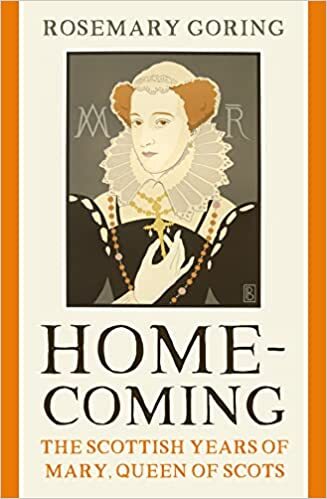
Homecoming: The Scottish Years of Mary, Queen of Scots
Hardcover – 4 August 2022 (UK) & 11 October 2022 (US)
One of the most famous queens in history, Mary Stuart lived in her homeland for just twelve years: as a dauntless child who laughed at her friendsʼ seasickness as they sailed to safety in France and later, on her return as an 18-year-old widow to take control of a nation riven with factions, dissent and religious strife. Brief though her time in Scotland was, her experience profoundly influenced who she was and what happened to her.
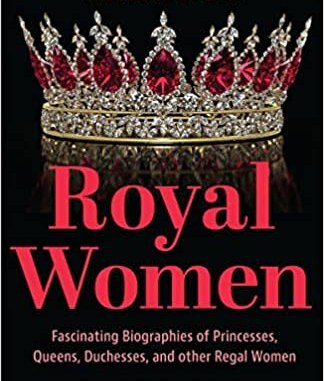
Secrets of Royal Women: Fascinating Biographies of Princesses, Queens, Duchesses, and other Regal Women
Paperback – 13 September 2022 (US) & 13 October 2022 (UK)
Enjoy this engaging collection of biographical vignettes highlighting the secret lives of royal women like Queen Anne, Queen Noor, Princess Grace Kelly, and many other phenomenal women.
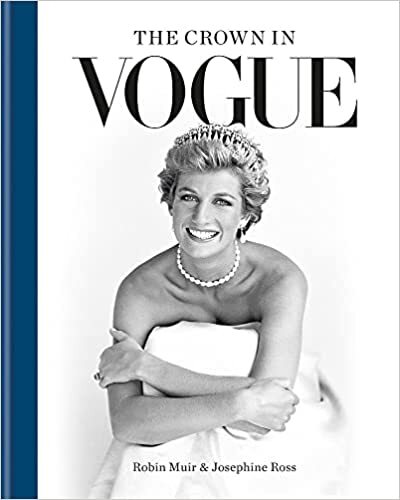
The Crown in Vogue
Hardcover – 6 October 2022 (UK) & 8 November 2022 (US)
With visual treasures from Vogue’s unrivalled archive and contributions through the decades from the most perceptive of royal commentators – from Evelyn Waugh to Zadie Smith – The Crown in Vogue is the definitive, authoritative portrait of royalty in the modern age.
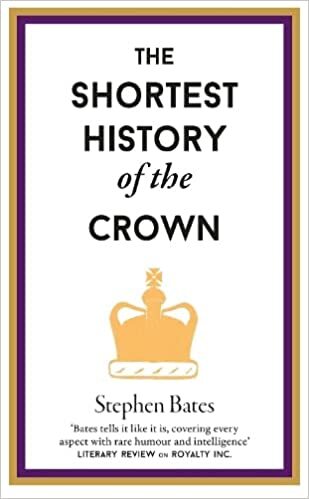
The Shortest History of the Crown
Hardcover – 4 October 2022 (UK)
In this sprightly commentary on the Crown’s 1,800-year-long story, Stephen Bates provides a dazzling insight into Royal custom and ritual whilst depicting the individuals behind the myth with compassion and wit. And as our ageing Queen prepares to pass the baton, he asks us all to consider: could we ever do without the Crown?
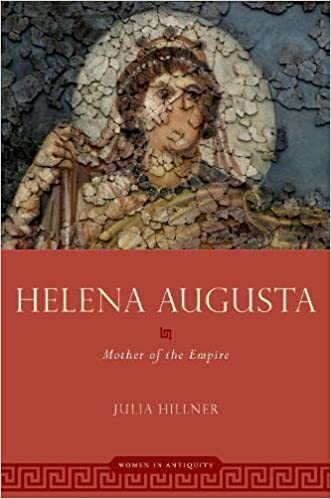
Helena Augusta: Mother of the Empire
Hardcover – 28 October 2022 (US) & 20 November 2022 (UK)
In the middle of the third century, a girl was born on the north-eastern frontier of the Roman empire. Eighty years later, she died as Flavia Iulia Helena, Augusta of the Roman world and mother of the first Christian emperor Constantine, without ever having been married to an emperor herself. In Helena Augusta: Mother of the Empire, Julia Hillner traces Helena’s story through her life’s peaks, which generated beautiful imperial artwork, entertaining legends as well as literary outrage. But Helena Augusta also pays careful attention to the disruptions in Helena’s life course and in her commemoration–disruptions that were created by her nearest male relatives.
[no image yet]
Marie-Antoinette’s Legacy: The Politics of French Garden Patronage and Picturesque Design, 1775-1867 (Spatial Imageries in Historical Perspective, 3)
Hardcover – 24 October 2022 (US & UK)
Challenging the established historiography that frames the French picturesque garden movement as an international style, this book contends that the picturesque French gardens from 1775 until 1867 functioned as liminal zones at the epicentre of court patronage systems. Four French consorts―Queen Marie-Antoinette and empresses Joséphine Bonaparte, Marie-Louise and Eugénie―constructed their gardens betwixt and between court ritual and personal agency, where they transgressed sociopolitical boundaries in order to perform gender and identity politics. Each patron endorsed embodied strolling, promoting an awareness of the sentient body in artfully contrived sensoria at the Petit Trianon and Malmaison, transforming these places into spaces of shared affectivity. The gardens became living legacies, where female agency, excluded from the garden history canon, created a forum for spatial politics. Beyond the garden gates, the spatial experience of the picturesque influenced the development of cultural fields dedicated to performances of subjectivity, including landscape design, cultural geography and the origination of landscape aesthetics in France.

Warrior Queens & Quiet Revolutionaries: How Women (Also) Built the World
Hardcover – 13 October 2022 (US & UK)
Warrior Queens & Quiet Revolutionaries is accessible, ambitious in its scope and fascinating in its detail. A beautifully illustrated book, it features a diverse and global cast of names and is both an alternative and eclectic women’s history of the world, a love letter to family history and a personal memoir about the nature of women’s struggles to be heard and their achievements acknowledged. Joyous, celebratory and engaging, it is a book for everyone who has ever wondered how history is made.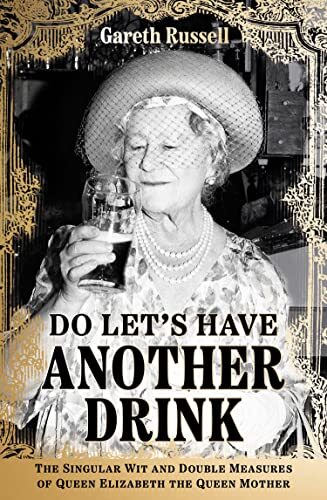
Do Let’s Have Another Drink: The Singular Wit and Double Measures of Queen Elizabeth the Queen Mother
Hardcover – 13 October 2022 (US & UK)
For fans of The Crown – which surgically removed the Queen Mother’s sense of humour, and Craig Brown’s bestseller Ma’am Darling which hilariously captured Princess Margaret and the rest of the royal roost – this biography is part-joke book, part-skimming stone biography, and part-travel guide to a world that doesn’t exist anymore.

The Tudors: Art and Majesty in Renaissance England
Hardcover – 25 October 2022 (US & UK)
Tudor courts were truly cosmopolitan, attracting artists and artisans from across Europe, including Hans Holbein the Younger (1497/8–1543), Jean Clouet (ca. 1485–1540), and Benedetto da Rovezzano (1474–1552). At the same time, the Tudors nurtured local talent such as Isaac Oliver (ca. 1565–1617) and Nicholas Hilliard (ca. 1547–1619) and gave rise to a distinctly English aesthetic that now defines the visual legacy of the dynasty. This book reveals the true history behind a family that has long captured the public imagination, bringing to life the extravagant and politically precarious world of the Tudors through the exquisite paintings, lush textiles, gleaming metalwork, and countless luxury objects that adorned their spectacular courts.

The Crown: The House of Windsor
Hardcover – 17 October 2022 (UK)
The book contains five chapters. First is Behind the Scenes, which focuses on the royals’ everyday lives and personal relationships. This is followed by The Weddings, which memorialises the stunning marriages of William and Kate and Harry and Meghan, and Public Facing: Royals on Duty, presenting the royals as official emblems of the state. The Art of Portraiture explores the level of artistry involved in creating official images of the royal family, while Family Life features the House of Windsor’s bonds to one another and follows the new generations to whom the Crown will one day be passed. This book is one of the finest collections of royal photographs ever assembled.

The Boleyns: From the Tudors to the Windsors
Hardcover – 15 October 2022 (UK) & 15 February 2023 (US)
Anne Boleyn, the second wife of Henry VIII, was executed on 19 May 1536. Her sister, Mary, rumoured mistress to the monarch, lived on and survived the king’s wrath. But this is not the end of the tale of the Boleyns and the British Royal family – their stories have remained entwined for almost 500 years, through countless wars, crises and triumphs. In this book, Amanda Harvey Purse delves into the archives to tell the remarkable story of a number of individuals who form part of the Boleyn bloodline, spanning the worlds of the military, art and politics. Among those featured are Robert Devereux, executed for treason after leading an army against the government in the early seventeenth century; Lettice Knollys, banished from the court of Elizabeth I after marrying the wrong man; and Cecilia Nina Bowes‑Lyon, the grandmother of and godmother to Elizabeth II, who married Claude Bowes-Lyon and played a significant role in the convalescence of soldiers during the First World War.
Queens: Women in Power through History
Hardcover – 14 October 2022 (UK) & 15 November 2022 (US)
In a world historically dominated by male rulers, the women who have sat on thrones of their own shine out brightly. Some queens and empresses were born to greatness, while others fought their way to power. Queens range from the ancient world to the present day, telling the stories of these women who ruled, from murderous former courtesan Wu Zetian in 7th century China to Elizabeth I, the ‘Virgin Queen’ of England.
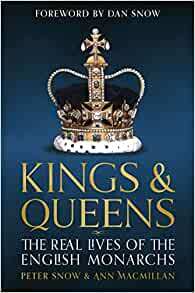
The Kings and Queens of England: Lives and Reigns from the House of Wessex to the House of Windsor
Hardcover – 13 October 2022 (UK) & 1 November 2022 (US)
Opening with the reign of King Alfred, during which the foundations of the nation were laid, The Kings and Queens of England introduces the monarchs who have ruled through personal and political strife, triumph, war and peacetime. Snow and MacMillan offer a unique insight into the waxing and waning fortunes of these formidable rulers, from those such as devious King John, who ruled with cruelty and fabled warrior-king William the Conqueror, to our own Elizabeth II, admired for her diplomacy and integrity while presiding over turbulent times.
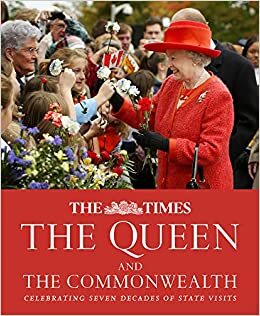
The Times: The Queen and the Commonwealth: Celebrating seven decades of state visits
Hardcover – 13 October 2022 (UK) & 1 March 2023 (US)
Our most travelled monarch has covered at least 1,032,513 miles and visited 117 countries during her reign. From New Zealand to Barbados, we look back at the Queen’s most memorable commonwealth visits.
Discover insights and memories, and see a changing world reflected in reporting from throughout the 70-year reign of Britain’s longest-serving monarch.
Queen Elizabeth II became Head of the Commonwealth upon the death of her father, King George VI, on 6 February 1952. Since then, she has toured the Commonwealth of Nations widely. She has visited all member states except Cameroon and Rwanda. This book follows the Queen on her journey throughout the world, as reported in The Times, with articles from the time along with images from her many visits.

Camilla, Duchess of Cornwall: From Outcast to Future Queen Consort
Hardcover – 27 October 2022 (UK & US)
A compelling new biography of Camilla, Duchess of Cornwall, reveals how she transformed her role and established herself as one of the key members of the royal family.
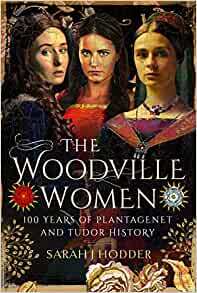
The Woodville Women: 100 Years of Plantagenet and Tudor History
Hardcover – 30 October 2022 (UK) & 31 December 2022 (US)
Elizabeth Woodville, Queen to Edward IV and mother of the Princes in the Tower. Elizabeth of York, daughter of Elizabeth Woodville and the first Tudor queen of England. Elizabeth Grey, granddaughter of Elizabeth Woodville and Countess of Kildare, whose life both in England and across the Irish sea was closely entwined with the Tudor Court. This is the tale of three generations of women, linked by their name, Elizabeth, and by their family relationship. The story begins in the reign of the great Plantagenet Kings with the life of Elizabeth Woodville and ends in the reign of perhaps England’s most famous dynasty, that of the Tudor kings and queens. Through the life of Elizabeth of York, the first Tudor queen and Elizabeth Grey, cousin to Henry VIII and Mary Tudor, we explore the Tudor court and its dealings with the Earls of Kildare. From the birth of our first Elizabeth to the death of our last, these three women lived through wars and coronations, births and deaths, celebration and tragedy and between them, they experienced some of the most exciting and troubled times in English history. Mother, daughter and granddaughter: individually, they each have their own fascinating story to tell; together, their combined stories take us on a journey through a century of English life.
The post Book News October 2022 appeared first on History of Royal Women.
September 15, 2022
Royal Jewels – The Greville Chandelier Earrings
The Greville Chandelier Earrings were from the collection of Dame Margaret Greville, the wife of the Hon. Ronald Greville. Margaret and her husband had had no children, and she bequeathed all her jewellery to Queen Elizabeth the Queen Mother upon her death in 1942.
Margaret probably ordered these earrings from Cartier in 1918, and they were probably the same earrings that were ordered to be lengthened with six marquise and six baton brilliants in 1922. They were likely adjusted again in 1929 with ten “assorted” diamonds and thus obtained their present form.
Embed from Getty ImagesEmbed from Getty ImagesEmbed from Getty ImagesAfter they came into the possession of Queen Elizabeth the Queen Mother, she gave them to her daughter Princess Elizabeth in 1947 as a wedding present.1
The post Royal Jewels – The Greville Chandelier Earrings appeared first on History of Royal Women.
[Photogallery] The final farewell of Queen Elizabeth II (Part two)
On 12 September, King Charles and Queen Camilla travelled to Westminster Hall to receive the condolences from the House of Commons and the House of Lords. They later travelled to Edinburgh, where they greeted members of the public at the Palace of Holyroodhouse. King Charles inspected the Guard of Honour and a Ceremony of the Keys was held.
Embed from Getty ImagesEmbed from Getty ImagesThe Queen’s coffin was taken to St Giles Cathedral in a procession. The Princess Royal, her husband Sir Timothy Laurence, Prince Andrew and Prince Edward took part in the procession.
Embed from Getty ImagesEmbed from Getty ImagesA service of Thanksgiving was held at St Giles Cathedral.
Embed from Getty ImagesThe Queen’s coffin rested at St Giles Cathedral for 24 hours as the public came to pay their respects.
Embed from Getty ImagesKing Charles, The Princess Royal, Prince Andrew and Prince Edward held a vigil known as the Vigil of the Princes, with Princess Anne being the first woman to participate in the custom.
Embed from Getty ImagesOn 13 September, King Charles and Queen Camilla travelled to Belfast, where they visited Royal Hillsborough.
Embed from Getty ImagesA service of reflection was held at St Anne’s Cathedral.
Embed from Getty ImagesThe Queen’s coffin was taken by hearse to Edinburgh Airport as thousands lined the roads.
Embed from Getty ImagesThe Princess Royal and Sir Timothy Laurence accompanied the Queen’s coffin to London.
Embed from Getty ImagesUpon arrival, the coffin was placed in the State Hearse and then travelled to Buckingham Palace. The Queen’s coffin was placed in the Bow Room at Buckingham Palace overnight.
Embed from Getty ImagesOn 14 September, the Queen’s coffin, now with the Imperial State Crown, was taken from Buckingham Palace to Westminster Hall in a procession. King Charles, the Princess Royal, Prince Andrew, the Earl of Wessex, the Prince of Wales, the Duke of Sussex, Peter Phillips, the Earl of Snowdon, the Duke of Gloucester, and Sir Timothy Laurence took part in the procession.
Embed from Getty ImagesA service was held in the presence of the royal family.
Embed from Getty ImagesEmbed from Getty ImagesEmbed from Getty ImagesEmbed from Getty ImagesEmbed from Getty ImagesThe Queen is now lying in state in Westminster Hall until the morning of 19 September. The public can pay their respects during this time.
Embed from Getty ImagesThe post [Photogallery] The final farewell of Queen Elizabeth II (Part two) appeared first on History of Royal Women.
September 14, 2022
From journalist to Queen – a look at the life of Queen Letizia of Spain
Queen Letizia is one of the most fashionable consorts in the world who once graced tv screens as a journalist. So, who is the reporter turned Queen consort of Spain?
Embed from Getty ImagesLetizia Ortiz Rocasolano was born on 15 September 1972 in Oviedo, Asturias, Spain to Jesús José Ortiz Álvarez and María de la Paloma Rocasolano Rodríguez. She is the eldest of three daughters of the couple; her sisters are Telma (b. 1973) and the late Érika (1975-2007). Her youngest sister died of a reported drug overdose; an autopsy was performed, and the Spanish media reported it was suicide.
Letizia was christened on 29 September 1972 at the Cristo de las Cadenas Chapel; her maternal uncle and paternal aunt are her godparents. Her First Holy Communion came when she was eight years old, on 16 May 1981.
The future queen’s education occurred at the La Gesta School and the Alfonso II Institute in Oviedo. She moved with her family to Madrid when she was 14 and enrolled at Ramiro de Maeztu High School. Letizia graduated in 1990.
Not as athletic as she was artistic, Letizia enjoyed music and ballet while growing up. Perhaps hinting at her future profession as a successful journalist, she was said to be quite intelligent and articulate. Letizia, who was a restless child, also struggled with science-related courses.
Her love of journalism came from her grandmother, with whom she spent time at the headquarters of the Radio Oviedo after school; she also took part in the El Columpio radio show by age ten, airing on Saturday mornings. The show was on Radio Antena 3, run by her father’s small production company. He allowed his two oldest daughters and other children to prepare and present the radio programme; this, too, prepared Letizia for what she would do while working for EFE and CNN+.
Letizia studied journalism at the Complutense University of Madrid and later got a master’s degree in audiovisual journalism from the Institute for Studies in Audiovisual Journalism. She gained experience in the field while at university by working at the newspapers La Nueva España and ABC and the Spanish international news agency EFE.
After Letizia graduated, she moved to Mexico, where she worked for the newspaper Siglo 21; while there, she began studying for her doctorate degree, but she did not complete the courses.
The future consort returned to Spain and worked at Spain’s Bloomberg and then CNN as a reporter, editor, and broadcaster. She worked on special programmes and was dispatched across the world to report on significant events, including the 9/11 attacks in the United States and the 2000 US presidential election.
Casa Real has said about her career, “She was an editor in the society, education and science department, and later once again joined the editing team of Telediario Segunda Edición, which she co-anchored.”
She dated high school teacher Alonso Guerrero Pérez for ten years; the pair met while she was in high school. They married in a civil ceremony in 1999 but divorced a year later. By 2003, news broke in Spain that Felipe, the Prince of Asturias, was engaged to Letizia. It was a shock to Spaniards as the couple had successfully dated in secret.
Embed from Getty ImagesLetizia received a white gold 16-baguette diamond ring from Felipe, and she gave him a classic book and white and gold cufflinks for the engagement. Letizia’s first marriage was not considered canonically valid as a civil ceremony, which enabled her and the future King to marry in the Catholic Church.
Embed from Getty ImagesThe pair married on 22 May 2004 in Madrid at the Cathedral Santa María la Real de la Almudena, with Letizia becoming a princess upon the marriage. The wedding occurred less than two months after the Madrid terror attacks, and the couple honoured victims at the ceremony. It was the first royal wedding for the Cathedral Santa María la Real de la Almudena, and it had been almost a century since Madrid had hosted a royal wedding.
The couple now has two daughters – Leonor (31 October 2005) and Sofía (29 April 2007).
Embed from Getty ImagesLetizia became Queen consort upon her father-in-law, King Juan Carlos’s abdication in favour of Felipe on 19 June 2014. From that point on, she became Queen Letizia of Spain.
Embed from Getty ImagesLetizia is an active queen, attending many events monthly ranging from cancer, ALS and journalism while raising her two daughters as far away from the spotlight as possible. She is also helping to prepare her older daughter, Leonor (now Princess of Asturias), for her future role as queen regnant.
The post From journalist to Queen – a look at the life of Queen Letizia of Spain appeared first on History of Royal Women.
September 13, 2022
The accident that changed Monaco forever (Part two)
While Stéphanie remained unaware of what was happening, Prince Rainier, Prince Albert and Princes Caroline were living a nightmare. Doctors were finally able to give Prince Rainier a full update on his wife’s condition. Her brain damage was severe and permanent – there was no longer any brain function present. Princess Grace was now in a coma and being kept alive by machines. From the early hours of the morning of 14 September, she was clinically dead.
Albert and Caroline were asked to say goodbye to their mother. Prince Rainier stayed behind with his wife, and around noon, he gave the doctors permission to turn off the life support machines that had been keeping her heart beating. On 14 September 1982, at 10.35 p.m., Princess Grace died. She was still only 52 years old.
Rumours began to circulate around the accident that Princess Stéphanie had been the one driving or that the brakes had failed. Stéphanie herself was injured in the accident, which would have made it impossible to switch places with her mother. In addition, she always denied the rumours. Friends of the family also said that Grace would never have allowed Princess Stéphanie to drive. Grace herself would not usually have driven herself either, but she wanted to take the dresses with them. Nadia LaCoste, who worked for Grace, said, “She did not like to drive at all. Thus, you can talk of fate.”1 The Princely Palace issued a statement on 21 September retracting their initial statement of a brakes failure and confirming that Grace had suffered a stroke.2
Embed from Getty ImagesFrom 15 September until 17 September, Grace laid in state in the chapel of the Princely Palace. She was surrounded by candles and white flowers as two guards watched over her. Countless people came by to pay their respects to the Princess. Princess Grace’s head had been shaved in the hospital for the CT scan, and so a blonde wig was placed on her head. It also covered the serious head wound she had. She held a rosary in her clasped hands and was dressed in a long, silk Dior dress that had been in the backseat of the car that day.
Part three coming soon.
The post The accident that changed Monaco forever (Part two) appeared first on History of Royal Women.
September 12, 2022
The accident that changed Monaco forever (Part one)
The day of 13 September 1982 started like any other Monday. Princess Grace of Monaco had a full schedule for the week ahead. She was supposed to meet with Robert Dornhelm in Paris to discuss the reworking of Rearranged, an independent film that she and her husband Prince Rainier had been working on together. Their daughter Stéphanie was also supposed to be in Paris to start a course in fashion design. However, she had announced that she wished to attend a car racing school with her boyfriend Paul Belmondo instead. Her parents were shocked, and several arguments followed. The day after the Paris meeting, Grace was supposed to go to the United Kingdom to attend a poetry reading at Windsor Castle alongside The Queen.
The family had spent the weekend of 11-12 September at their estate of Roc Agel with Robert Dornhelm. He left for Paris on Sunday. Grace and Stéphanie left the house at Roc Agel around 9.45 a.m. Grace drove down the narrow road with Stéphanie in the passenger seat. Several gowns and dressed were stashed in the backseat, as Grace did not want them to get creased. One of these dresses would become the dress she wore as she lay in state. The dresses were also the reason that the chauffeur was not the one driving the car but stayed behind. The car went down the extremely curvy Route D 37, with several sharp hairpin turns after each other.
Grace suddenly suffered a cerebral haemorrhage while at the wheel of the car, and the car began to skid and skirt along the rock wall. Then the car sped down the hill, heading towards the next hairpin turn without slowing down. The car plunged off the 130-foot cliff and came to rest between the trees and bushes of a private garden. It was now 10.05 a.m. Stéphanie managed to crawl out of the car and begged the people who ran toward them to call for help. Grace was sprawled across the inside of the car with her head towards the rear. One of her legs appeared to be twisted; she was unconscious and had a headwound. Emergency personnel managed to extract her from the car, and she was transported to her namesake hospital. Stéphanie was transported in the second ambulance. Prince Rainier and Prince Albert reached the site shortly before 10.30 a.m and saw how Grace and Stéphanie were being loaded into the ambulances.
Embed from Getty ImagesAfter Grace’s arrival at the hospital, she was examined by Dr Charles Louis Chatelin, who was the head of surgery. She was immediately taken into emergency surgery, which lasted for four hours. She suffered from internal bleeding, which had to be stopped. She had also suffered breaks in her thighs, clavicle and ribs. Her headwound was also bleeding heavily, and her brain damage turned out to be severe. She urgently needed a CT scan to determine the severity of the damage, but there wasn’t a CT machine at the hospital. The only CT machine belonged to a private physician, and his office was on the third floor. The small elevator could not accommodate the stretcher Grace was on, and so they had to carry her up the stairs. By the time a scan was made, 13 hours had passed since the accident.
A relatively innocent communique from the Palace stated that Grace had a fractured right thighbone, a broken rib and a shattered collarbone. Stéphanie was slightly bruised but otherwise uninjured. “Both were taken to the hospital named after Grace, where they were reported to be in good condition.”1 In reality, Stéphanie had a concussion and a vertebrae injury. She was kept in the dark about the seriousness of her mother’s condition.2
Part two coming soon.
The post The accident that changed Monaco forever (Part one) appeared first on History of Royal Women.



